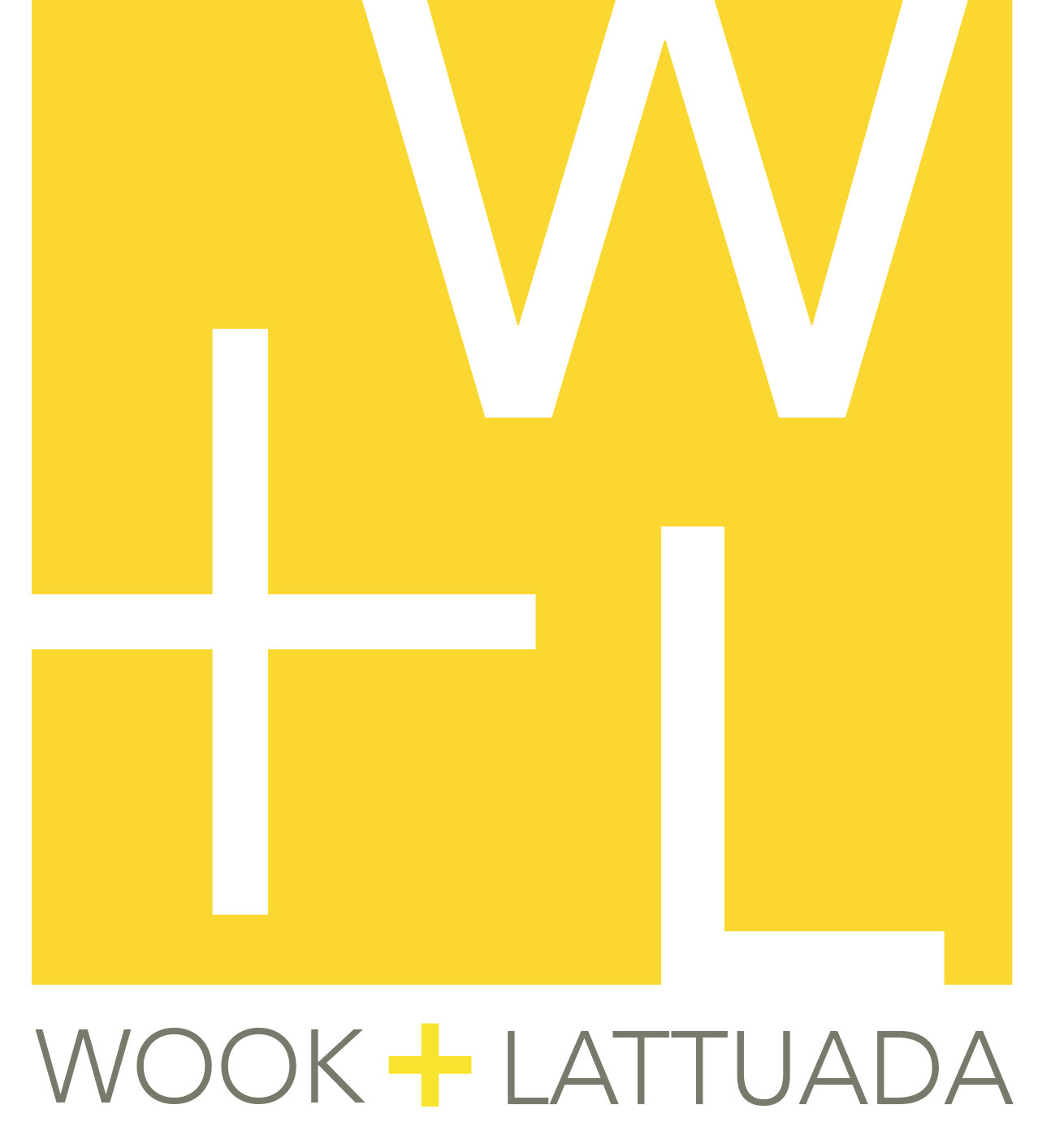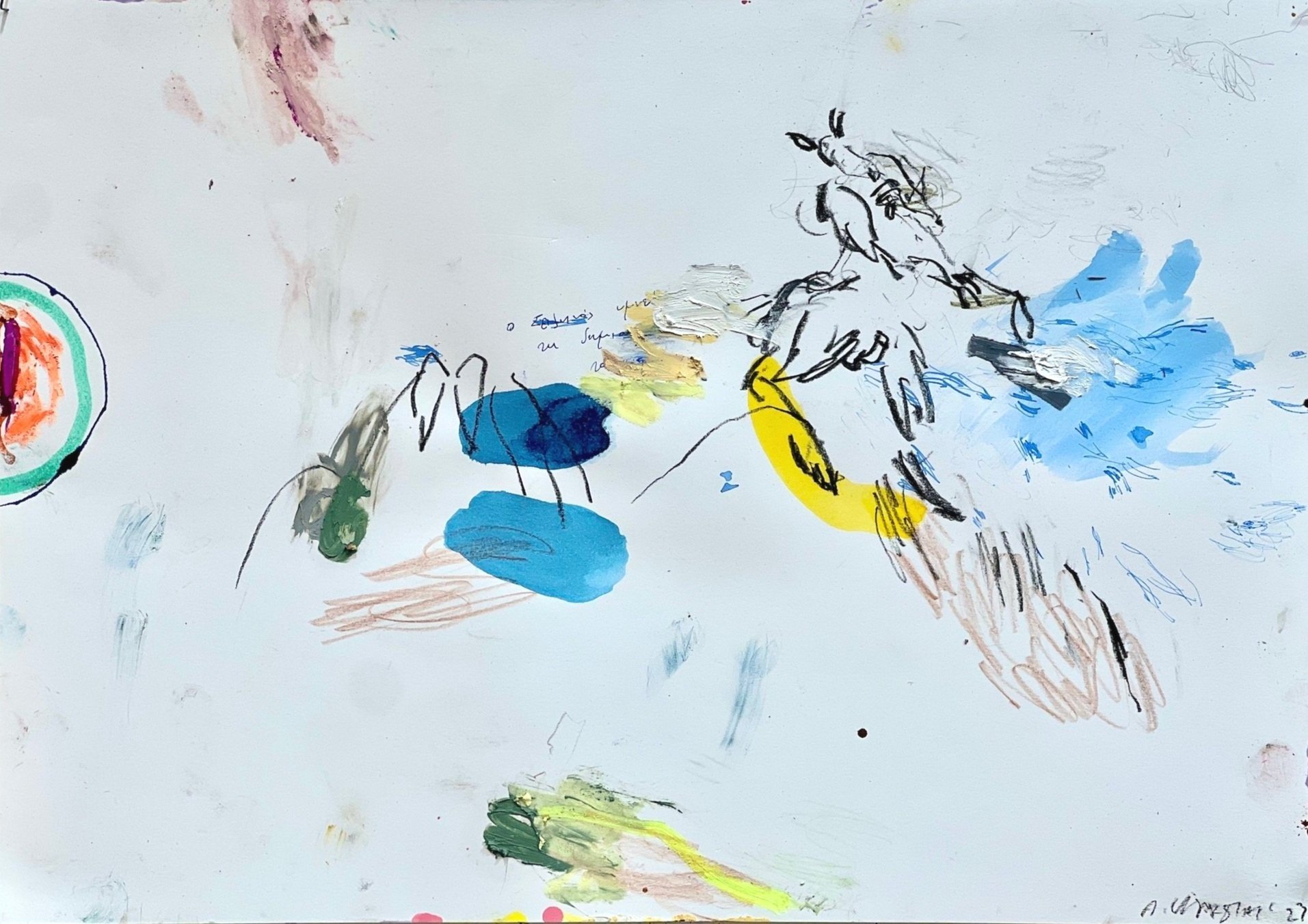Ariadni Vitastali
Beyond Mythology
October 18 - November 4, 2023
New York
NEW YORK - Wook + Lattuada Gallery is proud to present Ariadni Vitastali's recent works.
Ariadni's works on paper, reveals a curious form of abstraction that exceeds normative painting. Her unlikely choice of materials for these works includes ink, graphite, colored pencils, erasures, and oil sticks. They are often placed together throughout the space of the paper, thereby giving her works a sudden evocation of draftsmanship, eliciting our sense of expertise.
Describing these paintings presents a modest challenge given that Ariadni found her direction of work through various approaches to abstraction taken from the New York School in the late 1940s, evolving steadily into the early 1970s. What came into being was her most recent style of abstraction that went beyond predetermined methods towards a more deeply personalized means. Here, Ariadni's forms gradually lost their painterly likenesses to maintain an appearance of suspension. The paintings from 2023 focus on abstraction with elements of figuration. In essence, her paintings are generally absent from contrivance, whereupon they are given over to markings that occasionally revert to laxity. For the most part, viewers are free to guess what these abstractions mean or how we might come to terms with their meanings in the future.
In an early work titled 1993, the word “Compress” is placed beside an acquaint and dry point print, measuring 18 x 16.” In another work, an ink smudge includes a linear sketch of a book. In a third work, linear forms are suspended in an abstract relationship to one another. Each of the three works – dated 1993 – function in a tripartite configuration. The lightness of these works is often difficult to read either within or beyond possible forms of meaning, even as they would appear to play a distinct role within a larger composition.
In other early works from 1995, a linear ink drawing reads as a jumbling of unkept hair adjacent to a work, suggesting an ink painting simultaneously appearing wet and dry. The black and whiteness of these works appear close to animal and vegetable elements, wherein the colors are brightly shown despite their modest scale. They read as purple, red, green, and yellow.
Further, these primary colors transform their space into another complex work wherein an intense yellow has been poured against a dark green square. In addition, there is an evenly painted blue backdrop with a configuration of two black creatures seemingly at odds with one another. The content of their struggle is difficult to surmise. Their forms are caught in a skirmish, apparently locked into a visual duality, struggling to let go. Together, they constitute a visual coherence combined with a spatial energy that lends itself to the scope of our fascination.
Ariadni’s abstractions hold a certain fascination on many levels. If I were to compare her work with another artist, it would be that of the American artist Cy Twombly. This is not to say they appear on the same level. Rather, it is to suggest that the indirectness of their space and their ability to mark the surface accordingly suggests a common thought process. Even so, their differences are apparent in the sense that Vitastali’s reductive applications are worthy of note. It is tempting to say that her markings are restrained, which is untrue. She is a painter with the ability to mark aggressively and also with incredible calm.
The recent “Untitled” (2023) paintings by Ariadni might be understood as divisions between gatherings and figurations, both painted from the perspective of abstraction. In addition to ink, we read primaries and secondaries, which include fleshy pinks and browns.
The references may suggest mythologies anywhere from El Tauro to Leda and the Swan, but rarely, if ever, read directly. The formal break-up in Ariadni’s paintings is stupendous as we are invited to read her paintings as a relaxation, that is, to play literally with form, color, and space. This heart-felt visual propensity may, at times, go over the top, but only in a way that satisfies our desire for formality in painting that is, formality as an open-minded provocation that fulfills our desire to see, think, and live.
Ariadni graduated from École Nationale Supérieur des Beaux-Arts de, Paris in 1998. Many of her works have been collected by National Bank of Greece, Eurobank, UBS, and Société General as well as many private collectors. She works and lives in Thessaloniki, Greece.
Reviewed by Robert C. Morgan


